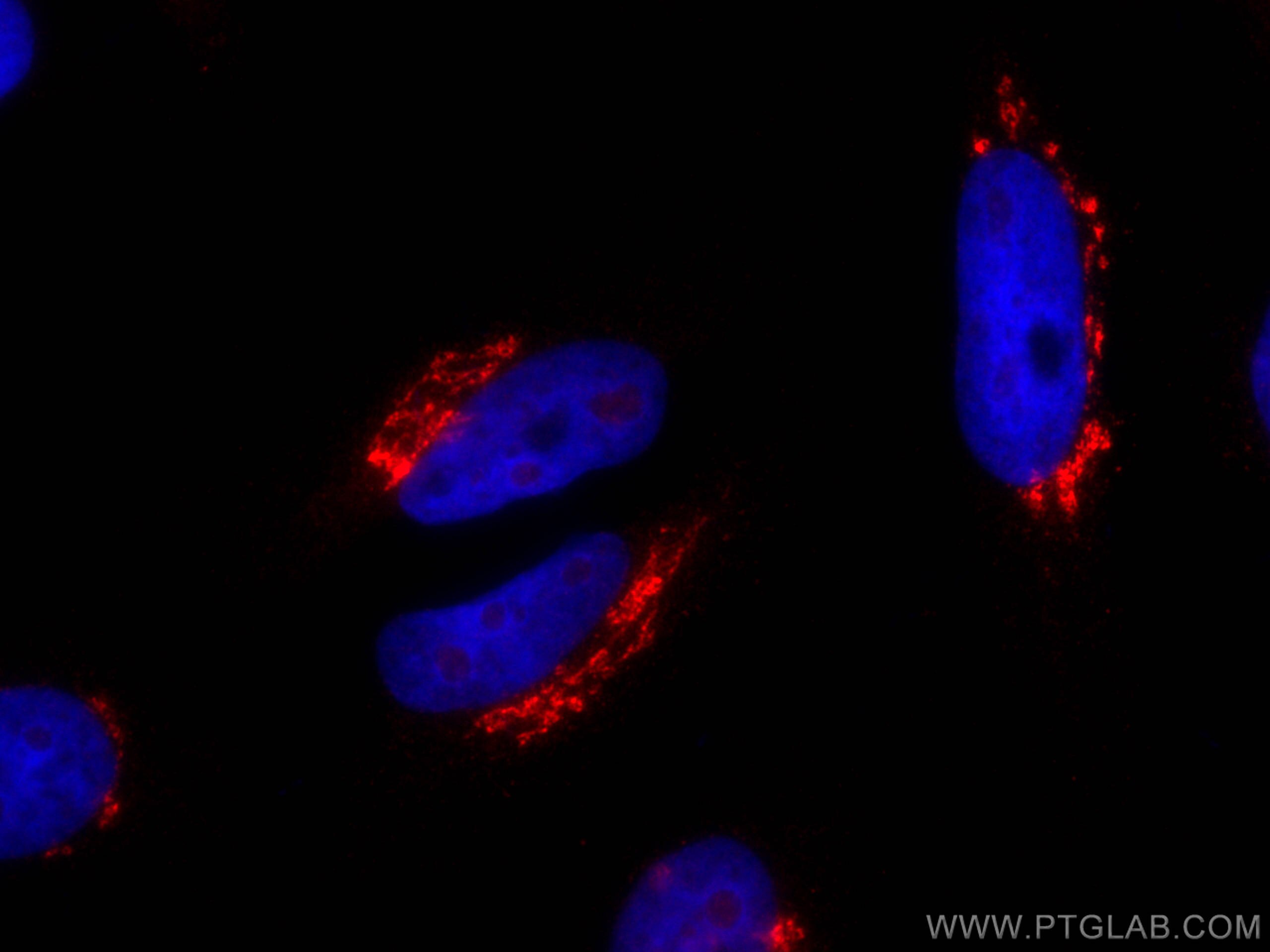Tested Applications
| Positive IF/ICC detected in | HeLa cells |
Recommended dilution
| Application | Dilution |
|---|---|
| Immunofluorescence (IF)/ICC | IF/ICC : 1:400-1:1600 |
| It is recommended that this reagent should be titrated in each testing system to obtain optimal results. | |
| Sample-dependent, Check data in validation data gallery. | |
Product Information
CL594-13573 targets TGN46 in IF/ICC applications and shows reactivity with human samples.
| Tested Reactivity | human |
| Host / Isotype | Rabbit / IgG |
| Class | Polyclonal |
| Type | Antibody |
| Immunogen |
CatNo: Ag4470 Product name: Recombinant human TGOLN2,TGN46 protein Source: e coli.-derived, PGEX-4T Tag: GST Domain: 25-384 aa of BC028219 Sequence: SVKQEEAGVRPSAGNVSTHPSLSQRPGGSTKSHPEPQTPKDSPSKSSAEAQTPEDTPNKSGAEAKTQKDSSNKSGAEAKTQKGSTSKSGSEAQTTKDSTSKSHPELQTPKDSTGKSGAEAQTPEDSPNRSGAEAKTQKDSPSKSGSEAQTTKDVPNKSGADGQTPKDGSSKSGAEDQTPKDVPNKSGAEKQTPKDGSNKSGAEEQGPIDGPSKSGAEEQTSKDSPNKVVPEQPSRKDHSKPISNPSDNKELPKADTNQLADKGKLSPHAFKTESGEETDLISPPQEEVKSSEPTEDVEPKEAEDDDTGPEEGSPPKEEKEKMSGSASSENREGTLSDSTGSEKDDLYPNGSGNGSAESSH Predict reactive species |
| Full Name | trans-golgi network protein 2 |
| Calculated Molecular Weight | 447 aa, 47 kDa |
| Observed Molecular Weight | 90-100 kDa |
| GenBank Accession Number | BC028219 |
| Gene Symbol | TGN46 |
| Gene ID (NCBI) | 10618 |
| RRID | AB_2923912 |
| Conjugate | CoraLite®594 Fluorescent Dye |
| Excitation/Emission Maxima Wavelengths | 588 nm / 604 nm |
| Form | Liquid |
| Purification Method | Antigen affinity purification |
| UNIPROT ID | O43493 |
| Storage Buffer | PBS with 50% glycerol, 0.05% Proclin300, 0.5% BSA, pH 7.3. |
| Storage Conditions | Store at -20°C. Avoid exposure to light. Stable for one year after shipment. Aliquoting is unnecessary for -20oC storage. |
Background Information
TGN46 (TGOLN2), the human homologue of rat Tgn38, is a transmembrane glycoprotein predominantly localized to the TGN (trans-Golgi network). TGN is a major secretory pathway sorting station for proteins and lipids. TGN46 may be involved in regulating membrane traffic to and from TGN. Alternatively spliced transcript variants encode different TGN46 isoforms. TGN46 has an apparent molecular mass of 100-150 kDa, suggesting extensive O- and N-glycosylations.
Protocols
| Product Specific Protocols | |
|---|---|
| IF protocol for CL594 TGN46 antibody CL594-13573 | Download protocol |
| Standard Protocols | |
|---|---|
| Click here to view our Standard Protocols |




